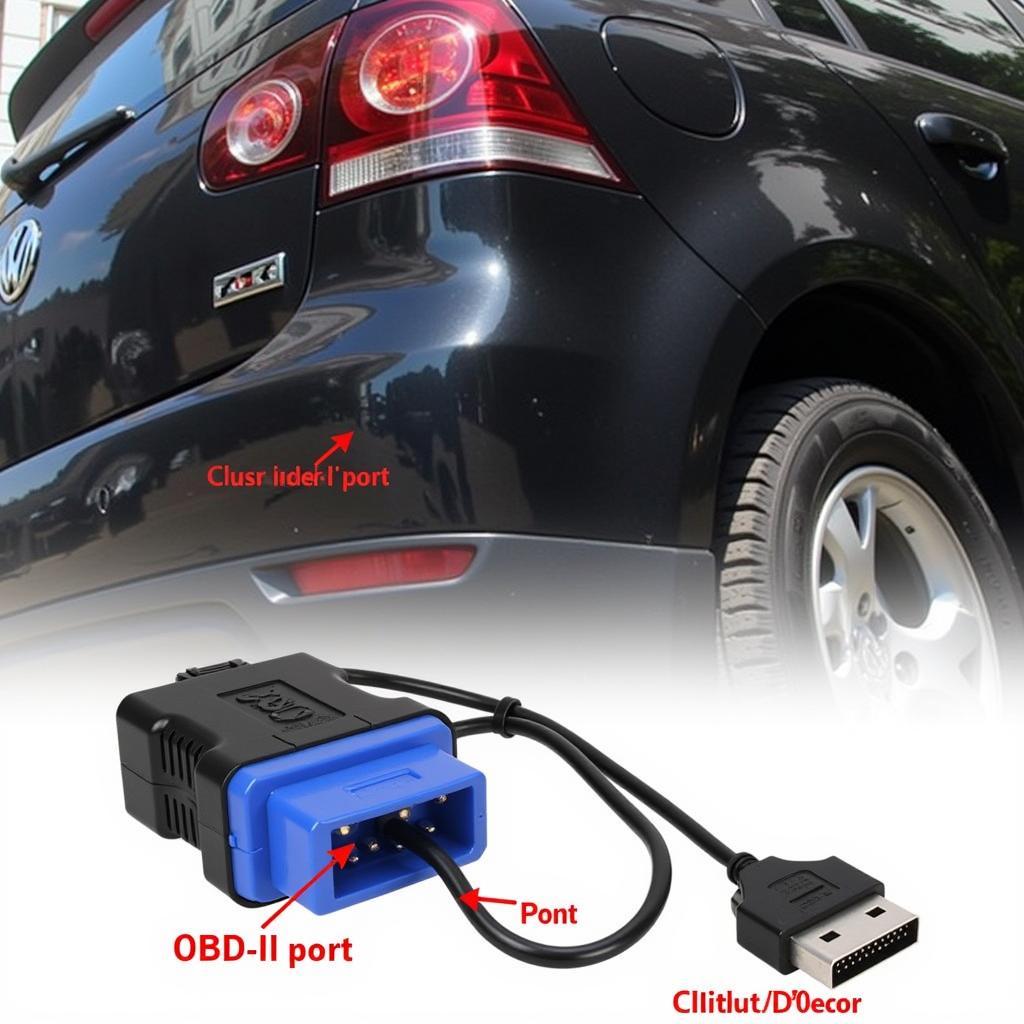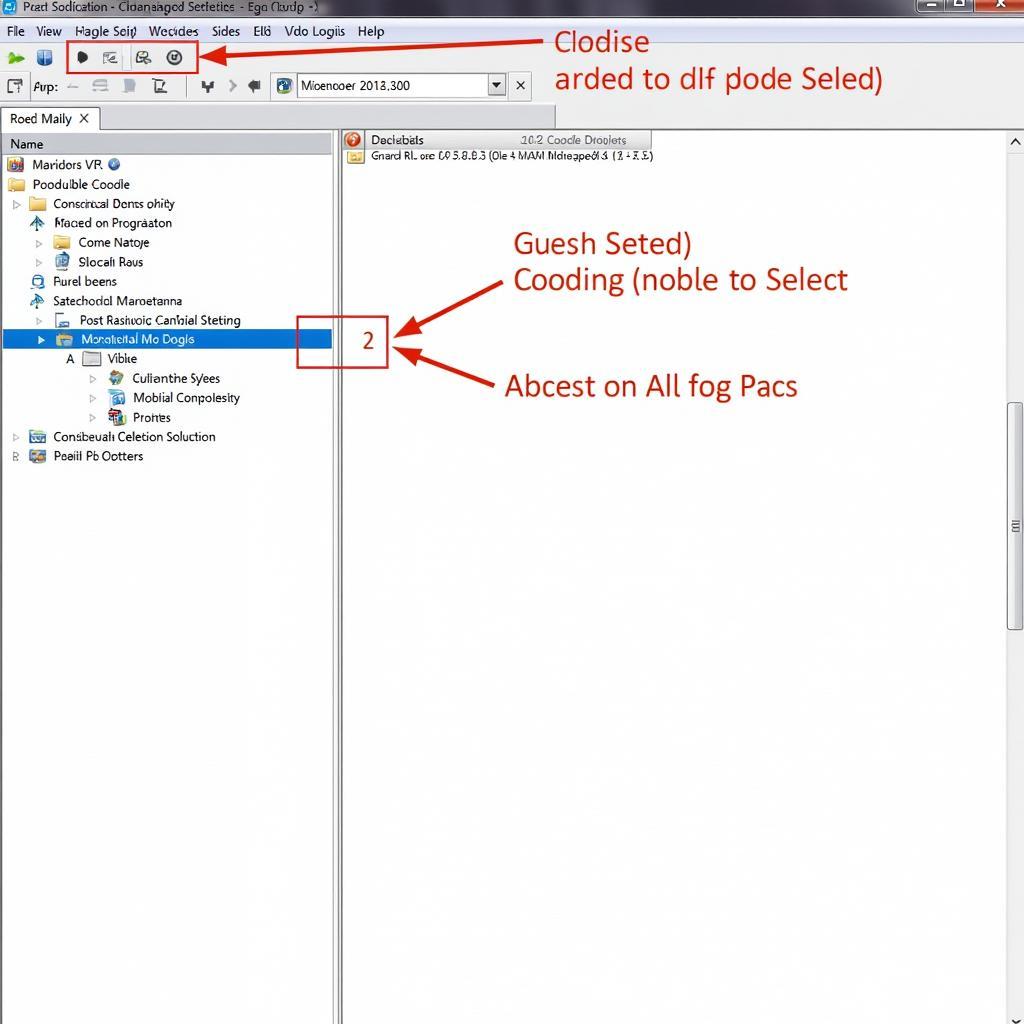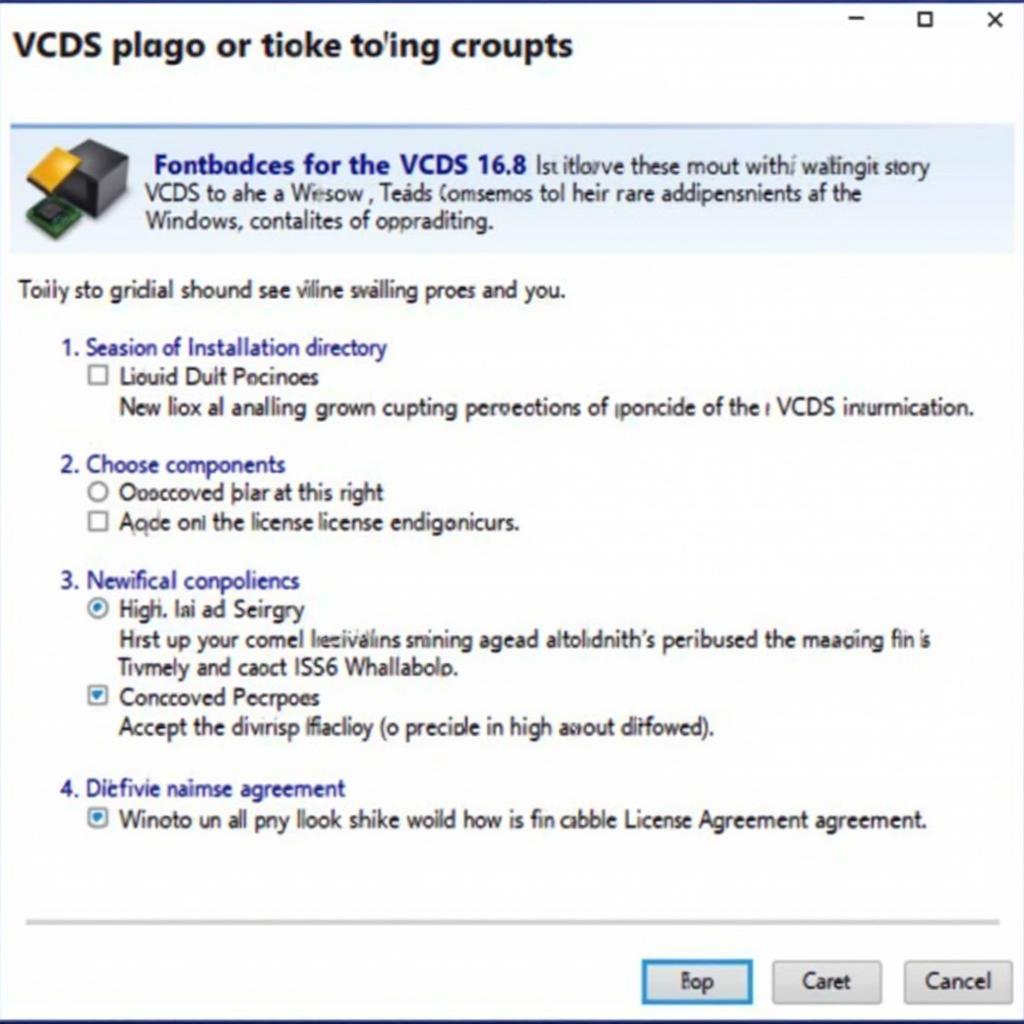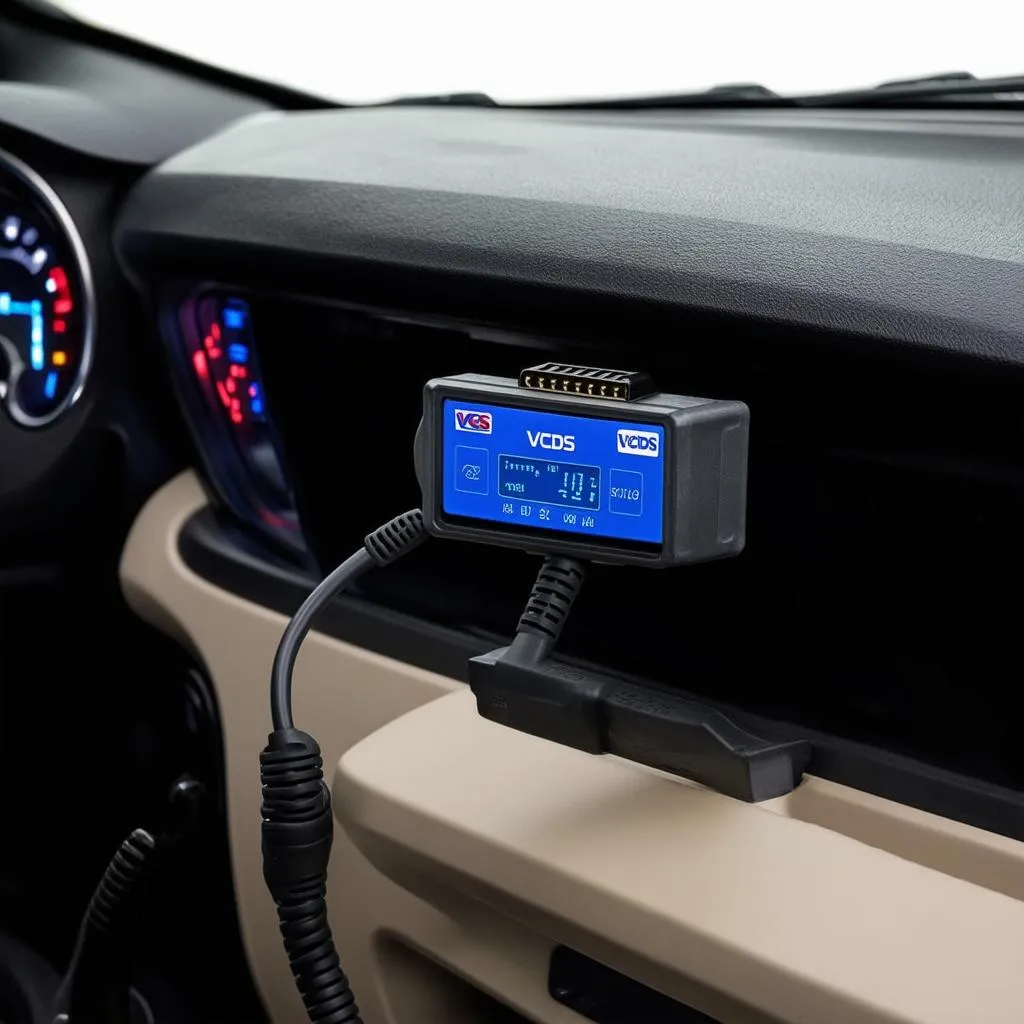VCDS coding allows you to unlock hidden features and customize your car’s settings. This guide provides a comprehensive overview of VCDS coding, including its benefits, common uses, and step-by-step instructions for various coding procedures. Whether you’re a car owner, mechanic, or automotive technician, this guide will equip you with the knowledge to effectively utilize VCDS coding.
Understanding VCDS Coding
VCDS, or VAG-COM Diagnostic System, is a diagnostic software specifically designed for Volkswagen, Audi, Seat, and Skoda vehicles. It allows you to access and modify various control modules within your car’s systems, enabling customization and troubleshooting capabilities. VCDS coding is the process of changing these settings to unlock hidden features, enhance performance, or fix certain issues.
Benefits of VCDS Coding
VCDS coding offers several advantages, including:
- Customization: Tailor your car’s features to your preferences.
- Feature Activation: Enable hidden features like automatic locking, daytime running lights, or convenience closing.
- Troubleshooting: Diagnose and fix specific issues related to control modules.
- Performance Enhancement: Optimize certain parameters for improved driving experience.
- Cost Savings: Avoid expensive dealer visits for simple coding adjustments.
After completing the installation, ensure all necessary drivers are installed correctly. You can check this in your device manager. Once confirmed, you can proceed to connect the interface to your car’s OBD-II port.
 Connecting VCDS Interface to OBD-II Port
Connecting VCDS Interface to OBD-II Port
Common VCDS Coding Applications
Here are some popular uses of VCDS coding:
- MFSW Coding: Enable multi-function steering wheel controls. See our vcds mfsw coding guide for more information.
- Lights Coding: Customize lighting settings like daytime running lights or coming/leaving home lights. Check out our vcds lights coding article for details.
- Convenience Features: Enable features like automatic locking, convenience closing, or rain-closing.
- Gauge Adjustments: Modify gauge needle sweeps or enable additional displays.
How to Perform VCDS Coding
Follow these general steps for VCDS coding:
- Connect VCDS Interface: Connect the VCDS interface to your computer and your car’s OBD-II port.
- Launch VCDS Software: Open the VCDS software on your computer.
- Select Control Module: Choose the specific control module you want to modify. For instance, coding for lights is typically done in module 09-Central Electrics.
- Access Coding: Enter the coding section of the selected module.
- Modify Coding: Carefully adjust the coding values according to your desired settings.
- Save Coding: Save the new coding to the control module.
- Test Functionality: Verify that the changes have been applied correctly.
John Smith, a senior automotive diagnostician with over 20 years of experience, advises, “Always back up your existing coding before making any changes. This allows you to revert to the original settings if anything goes wrong.”
VCDS Coding for Specific Models
VCDS coding procedures can vary depending on the car model and year. Here are examples of coding for specific models:
- Audi A3: Learn more about A3 VCDS coding on our dedicated page.
- Audi A6: For Audi A6 owners, our audi a6 vcds page provides valuable coding information.
 Navigating the VCDS Software Interface
Navigating the VCDS Software Interface
Tips for Successful VCDS Coding
- Research: Thoroughly research the specific coding procedures for your car model and year before making any changes. More information can be found on our dedicated vcds coding page.
- Backup Coding: Always save a copy of your original coding before modifying any settings.
- Small Changes: Make small, incremental changes to avoid unintended consequences.
- Consult Experts: If you are unsure about any coding procedure, consult with experienced VCDS users or professionals.
Jane Doe, a certified VCDS trainer, emphasizes, “Patience and careful attention to detail are crucial for successful VCDS coding. Rushing through the process can lead to errors and potential damage.”
Conclusion
VCDS coding is a powerful tool that allows you to customize your car’s features and unlock hidden potential. By following the guidelines and precautions outlined in this guide, you can safely and effectively perform VCDS coding to enhance your driving experience. Remember to always research thoroughly, back up your original coding, and seek expert advice when needed.
FAQ
- What is VCDS coding? VCDS coding involves changing the settings of various control modules in your car to enable or disable features.
- Is VCDS coding safe? Yes, VCDS coding is generally safe when performed correctly. However, incorrect coding can potentially cause issues.
- Do I need any special equipment for VCDS coding? Yes, you need a VCDS interface cable and the VCDS software.
- Where can I find VCDS coding instructions? You can find coding instructions online, in forums, and on dedicated websites like CARDIAGTECH.
- Can I revert back to my original coding if I make a mistake? Yes, if you have backed up your original coding, you can easily restore it.
- What are some common VCDS coding applications? Common applications include enabling convenience features, customizing lighting, and adjusting gauge settings.
- How much does VCDS coding cost? The cost of VCDS coding can vary depending on the complexity of the procedure.
Need Help with VCDS Coding?
For personalized support with VCDS coding, contact us via:
Whatsapp: +1 (641) 206-8880
Email: CARDIAGTECH[email protected]
Address: 276 Reock St, City of Orange, NJ 07050, United States
Our 24/7 customer support team is ready to assist you.


